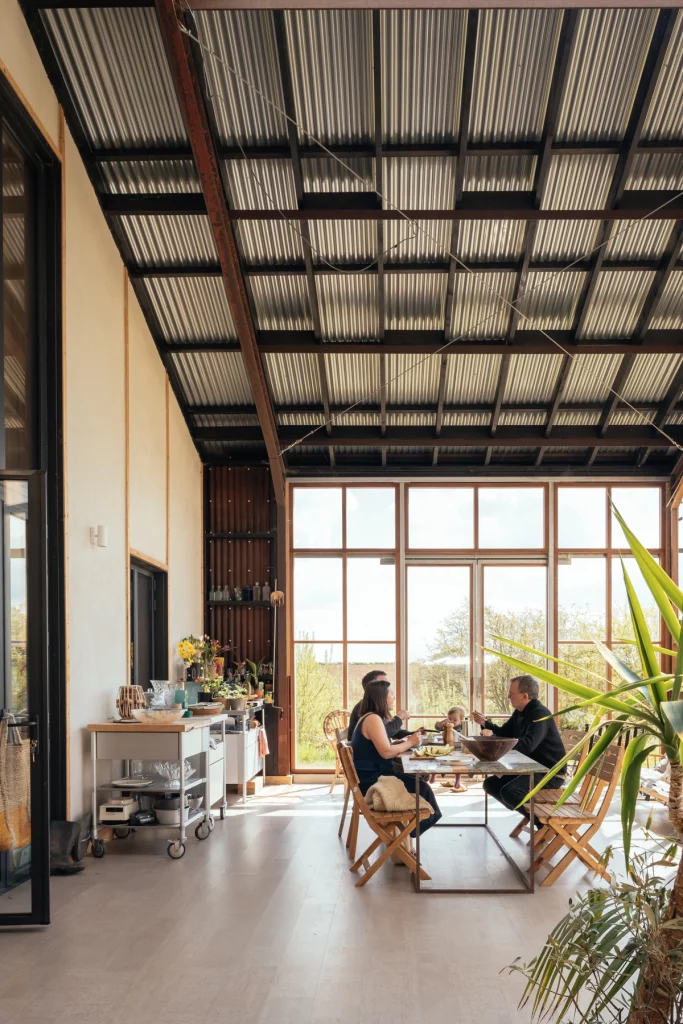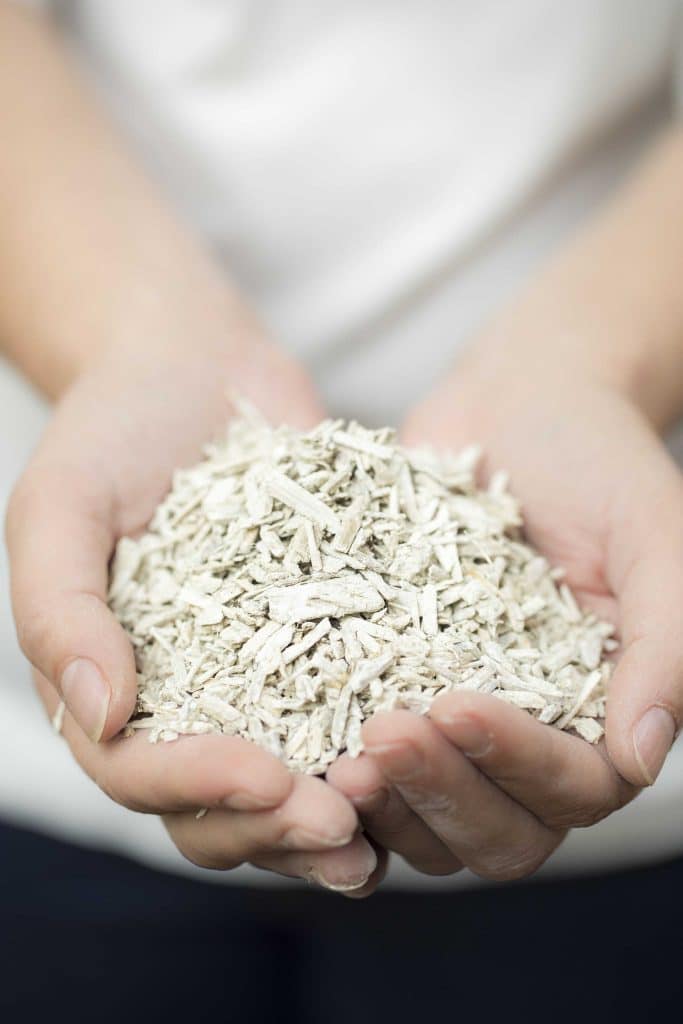First and foremost, its not just anyone who did it, but former film director Steve Barron; however, the title remains true. Steve Barron, in an effort to do something good for the environment, actually proved you can build a house of hemp. How did he do it, what did it require, and the positive benefits? Read on to find out more.
We appreciate you stopping by. Check out our Cannadelics Weekly Newsletter for frequent updates, and for access to tons of cool swag like cannabis flowers, vapes, edibles, a range of smoking paraphernalia, and cannabinoid compounds. Check the options, and pick the products you’re happiest to use!
First off, who is Steve Barron?
Who Steve Barron is, isn’t actually important to the story, but it is good to know who undertakes such projects. There is a reality that often those with more money, have a greater ability to accomplish these feats. There are probably plenty of people who would love to do the same thing, but don’t see it as a financially viable option. So, who is this guy who saw fit to build a house of hemp, and had the ability to do so?
Steve Barron certainly isn’t an average guy, even if his name isn’t the most recognizable in the world of film. Barron was a big director in the 1980’s for the seminal 80’s music videos that came out at that time. He’s responsible for creating the videos for hits like Michael Jackson’s ‘Billie Jean’, Toto’s ‘Africa’, Dire Straits’ ‘Money for Nothing’, and Bryan Adams’ ‘Summer of 69’, just to name a few.
He also got into film directing, and was the director for the 1990 classic ‘Teenage Mutant Ninja Turtles’, 1993’s ‘Coneheads’, ‘While You Were Sleeping’ in ’95, ‘The Adventures of Pinocchio’ in ’96, and satirical comedy ‘Mike Bassett: England Manager’ in 2001. He also directed and produced multiple TV shows between 1987-2017. He is certainly a director with some interesting and popular credits under his name, so it suffices to say he probably had a bit more capital to invest in this project than the average person would.

Steve Barron is Irish-British, born in Dublin, Ireland in 1956. He was raised in London, however, where he attended school. And its in England that he decided to move away from film, and get into hemp farming and house-building. He built the home in Cambridgeshire, on his Margent farm (previously a wheat farm that Barron converted to a hemp farm). And he started this project at the age of 60. It took him five years of research into hemp to start the project, and he began growing the first crops to use for the house, in 2017. The house is named Flat House.
What kind of licensing did he need?
It’s not that strange to think that any new building requires a certain number of permits for different things. Barron’s project, however, went a little further than the norm, because he wasn’t looking to build using standard building materials, but with the hemp plant. And, of course, hemp is part of the cannabis plant, which means as an illegal plant in most places, there are extra roadblocks to using it, apparently even when not for ingestion.
According to Barron, “You’d think it’d be DEFRA (the UK’s Department for Environment, Food and Rural Affairs) or the NFU (National Farmers’ Union) or some farming body [who regulate the growing of hemp], but it’s actually the Home Office.”
Why is that? Continued Barron, “They need to check you out and make sure you haven’t had a drug past or drugs bust of some sort, which I hadn’t. And so I got a license from them.” Just to be clear, when looking to build an environmentally sustainable house out of hemp, at his own cost, Barron – who wasn’t looking to use high-THC marijuana for the project, still had to have himself checked out for drug issues, just to get clearance for construction. That’s how not supportive governments are of using hemp for clean processes.
Yet, such a big part of the reason for doing all this, is how hemp helps the environment. Beyond being a great building material in terms of strength and durability, it is “fast-growing and better than commercial forestry at sequestering carbon – and its long tap roots help to regenerate the soil,” says Paloma Gormley, the head of Practice Architecture, in an interview for Architects’ Journal (reported in The Modern House.)
She continued, “Beyond the relatively light processing and transportation emissions, the materials can be understood to be carbon-neutral (or carbon-negative if you count the sequestration), which is a vast improvement on steel, concrete, or petrol-based insulations.”

What was the plan?
So what does this hemp house actually look like? The house was designed using the skeleton of a barn already on the property. The house includes several different rooms with different purposes. One room is a glass, self-heating room with an open plan, other rooms include bedrooms (there are three) and living rooms. The interior design uses the exposed hempcrete made from the hemp crop’s core fibers. Barron actually worked along with Cambridge University’s Darshil Shah, a biomaterials senior researcher at the Centre for Natural Material Innovation, who advised on how to create a new corrugated cladding material out of the exterior fiber of the plant.
Barron explained of the house that smaller was more ideal, as smaller requires less heating needs, especially for a small group of people living in it. His entire methodology is being copycatted by the company Material Cultures, the research part of Practice Architecture, which is looking to use a building material that can sequester carbon naturally, which is biodegradable, and which can be used with solar, wind, and biofuel energy sources.
Says Shah of the project, hemp is more efficient at sequestering carbon than trees are, with the capacity to absorb 8-15 tonnes of carbon dioxide per hectare yearly, whereas forests tend to absorb 2-6 tonnes. Shah explained how hemp can “replace fibreglass composites, aluminium and other materials in a range of applications.”
Hempcrete as a new building material
Hempcrete is a natural building material made from mixing the inner woody core of the hemp plant and lime. Lime is also a major component of cement, and it’s the heating of the lime for cement production that comprises the majority of cement CO2 emissions. The woody inner core of hemp is called the ‘shiv’ and is naturally high in silica, which allows it to more easily bind to the limestone, without heat.
They are simply mixed together with water to create a chemical reaction, which in turn makes a glue sort of substance which binds the hemp particles together to form something called ‘bonded cellulose insulation’. This dries into hempcrete. Hempcrete differs from concrete and plaster in that instead of filling space between particles to create firmness and strength, the hemp particles are coated by the lime glue to stick together, but without filling up the gaps in between.
Hempcrete has a massive advantage over cement in that the lime is not heated, and therefore, no CO2 is emitted. In fact, hempcrete can trap CO2, actually taking it out of the air, instead of putting it in there. According to research, hempcrete can sequester as much as 19lbs of CO2 per cubic foot, which is just about what three refrigerators release in a year’s time. How much CO2 emissions does cement production create?

Cement is an ingredient in concrete, and makes up about 7-10% of it. The rest is sand, gravel, and water. The cement industry, because of carbon dioxide release, is responsible for as much as 25% of total CO2 emissions for the industry, and about 8% of all global emissions. Per each dollar of revenue, cement production produces the highest amount of CO2 emissions. As cement is an integral building material, without alternatives, this is hard to get around.
Hempcrete has the positives of sequestering CO2, high levels of insulation, is antimicrobial, has a high thermal capacity that makes it great for structuring and covering walls, and is 1/7th the weight of concrete. It should be remembered though, that hempcrete cannot be used as a load-bearing material, though it can add weight support, particularly for framing. As of right now, it can only hold about 1/20th of what concrete can, meaning a stronger form must be formulated, or concrete can’t be ruled out completely.
Conclusion
We might not all have the ability to build a hemp house just yet since its still an expensive and difficult industry to navigate. But things are changing, and hopefully it will be a norm soon enough. If you’re interested in learning more about how to build a house of hemp, check out this video about Steve and his hemp house project. And if you’re looking for more ways hemp can replace standard production methods, check out these articles on hemp plastic, hemp paint and wood finishing materials, hemp fuel in place of gasoline, hempcrete, hemp batteries, and hemp paper products.
Welcome all! Thanks for joining us at Cannadelics.com; a news site complete with comprehensive independent coverage of the cannabis and psychedelics industries. Check us out regularly to stay current on important happenings, and make sure to subscribe to the Cannadelics Weekly Newsletter, to ensure you’re always up on all important headlines.
The post You Can Build a House of Hemp – This Guy Did It appeared first on Cannadelics.
Via https://cannadelics.com/2022/10/21/you-can-build-a-house-of-hemp-this-guy-did-it/
source https://rosalinaklerkx.weebly.com/blog/you-can-build-a-house-of-hemp-this-guy-did-it
No comments:
Post a Comment